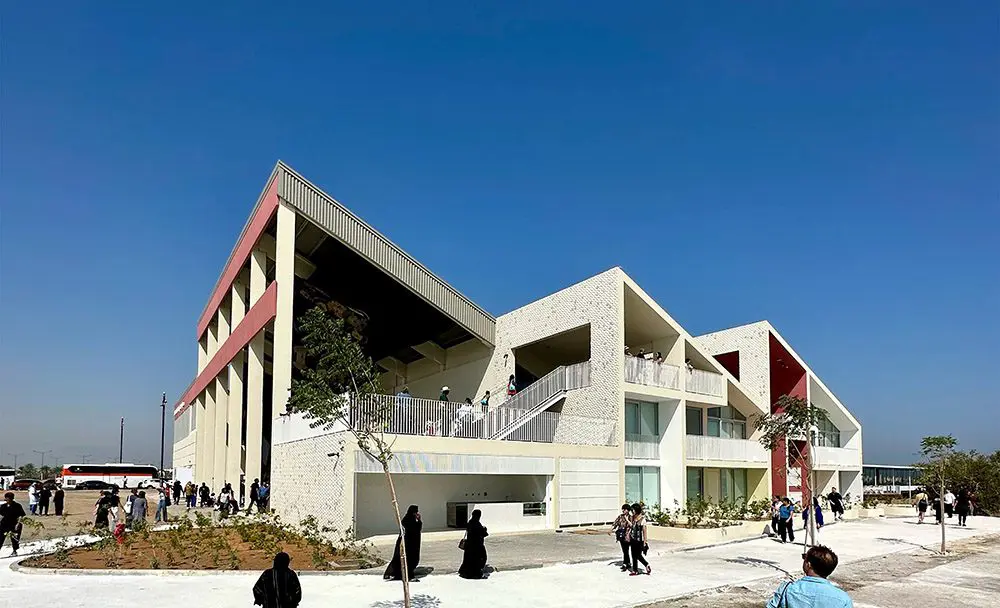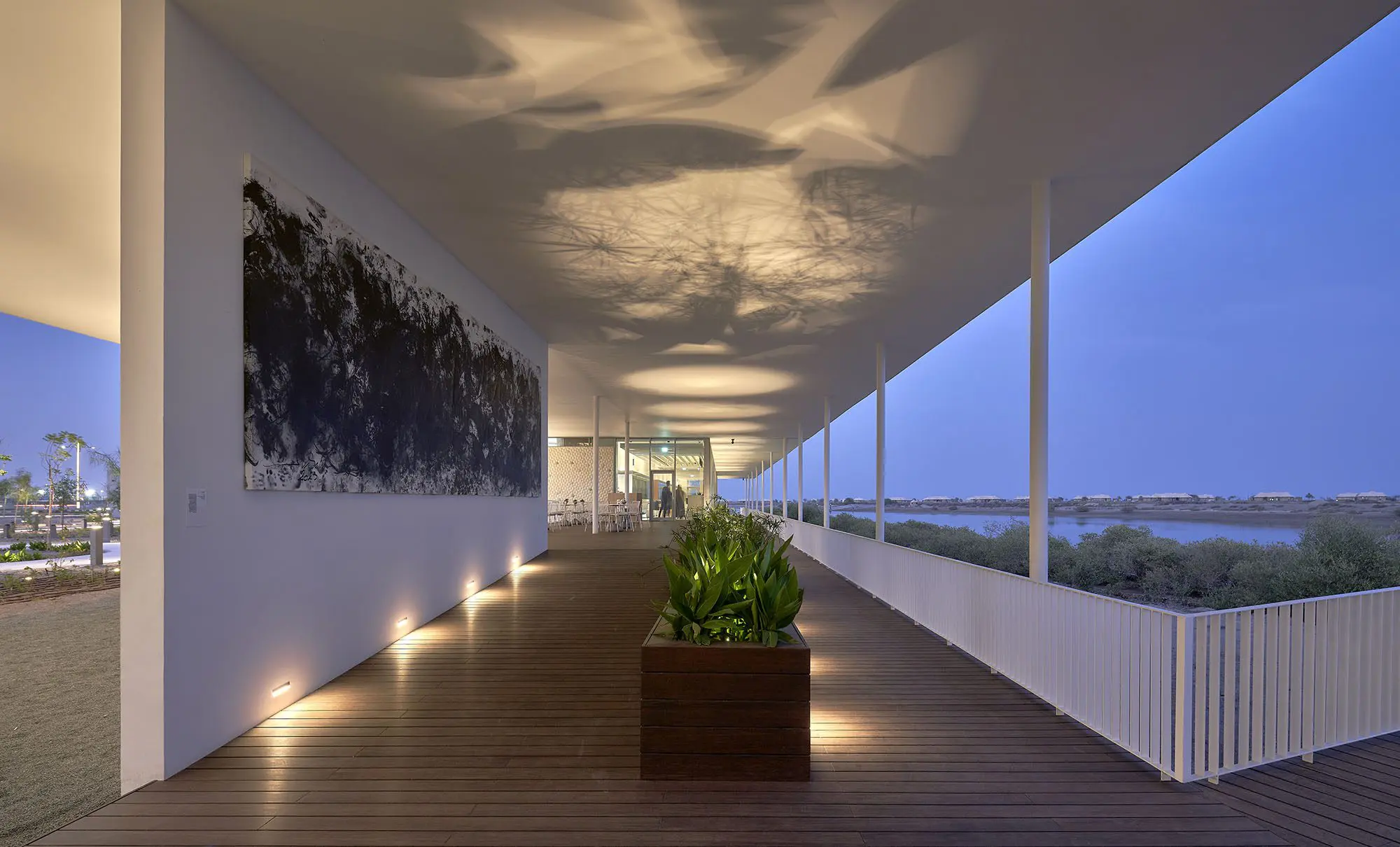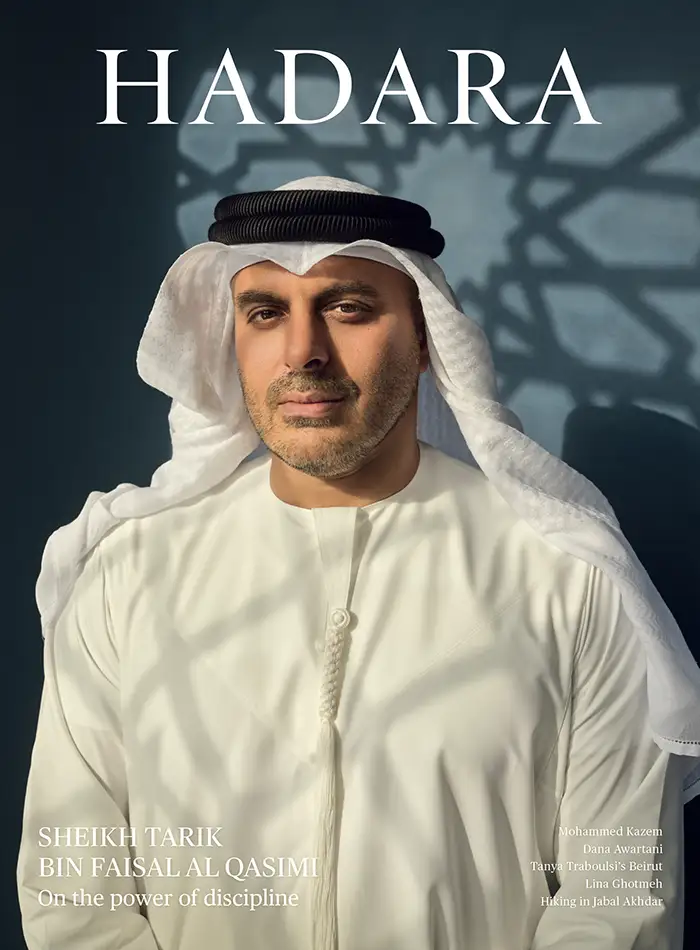A Beautiful Ruin
Turning a derelict ice factory into art galleries required a big leap of imagination.
By Catherine Mazy
PHOTOGRAPH BY PHIL HANDFORTH
A disused, 1970s fish-feed mill and ice storage facility on Sharjah’s east coast might have seemed an unusual purchase for Sharjah Art Foundation, a champion of the Gulf’s contemporary arts scene. But the foundation’s leaders, starting with President and Director Sheikha Hoor Al Qasimi, saw how the decaying industrial space could be perfect for displaying large works of art.
Lima-based 51-1 Arquitectos won the job, thanks to the less-is-more approach they applied to an extension of the Museum of Modern Art in Medellin, Colombia—whose main building had previously been a factory. While preserving the 20,000-square-metre Kalba factory, 51-1 added an extension for six artist residences that mimicked the factory’s iconic industrial sawtooth roofline. The architects also added a restaurant connected by a shaded walkway, prayer rooms, an edible garden, a workshop and a utility building.
When they first visited the site, however, their footsteps crunched on the pigeon guano that covered the floors. “It was a beautiful ruin. A very powerful space,” says Manuel de Rivero, one of the architectural trio on the project. “We said, ‘Look, this place is fantastic. Let’s do almost nothing.’”

Walkways, stairs and viewing platforms connect the art spaces with views of the creek. Photo courtesy of 51-1 Arquitectos.
Two priorities were views and shade. While the landscaping included trees like the native neem species, those take years to mature. For immediate shade, the walkway between the gallery and the restaurant got a cover, while remaining open to allow visitors not only to see the creek but also to hear the birds singing—the ice factory is next to the Khor Kalba Mangrove Centre nature reserve. The walkway approaches the creek at a slight angle, so one’s perspective changes constantly, while maintaining enough distance to not disturb the turtles that nest along the beach, de Rivero says.
The residential addition went on the “blind” side of the original factory and gave the apartments views of the creek. Likewise, the restaurant, run by Fen Café, is long and narrow, with views of mangroves and the creek. So that all diners benefit, regardless where they are sitting, mirrors along the back wall reflect the windows’ view.
Between the triangle roofs of the residents’ extension and the main factory, a roof deck provides more views, reached by an exterior staircase and an elevator, so one can go up one way and down the other. “It’s a Jackie Chan-James Bond thing—pursuits,” de Rivero says. “You never go out the way you entered.” The landing for the elevator offers a peek inside to the gallery below.
While the interior is anything but a typical museum white box, the architects didn’t want to clutter the space with air conditioning ducts or pipes. All the technical services went under the floors, connecting to a separate service building on the perimeter of the grounds.
“It works perfectly because the cool air goes down, where the people are, and the hot air goes up,” says Fernando Puente Arnao, 51-1 co-founder and the architect who configured the spaces, including the edible garden and prayer room.
Preserving most of the original structure required “being creative to turn the problems you found into advantages,” Puente Arnao says. For example, 51-1 didn’t cut new doors or windows, nor did the architects cover any existing openings. One wall had two doorways—one normal size and another smaller. The architects kept both and suggested letting children use the small one.

The original warehouse, which had an open, concrete frame and corrugated metal roof, was restored and now acts as the main arts space. Photo courtesy of 51-1 Arquitectos.
The climate posed other challenges. “It was important to choose materials that would work well with the sun and the dust, not materials that needed constant cleaning,” says Cesar Becerra, the third architect on 51-1’s core team for the project. “We think the quality of a building cannot be measured when it’s inaugurated and it’s all shiny and new, but when years pass and the materials are resilient. That’s when you can see if you are successful.”
The original factory had been beige, with dark red beams. The renovation kept those colours, especially as the architects learned that white would be too harsh on the eyes, and darker colours would absorb too much heat. For the residential extension, the architects marked the addition by using tile cladding in the same beige as the factory but also some that are gray and slightly convex to resemble turtle eggs, a nod to the factory’s natural neighbours. The tile grout also “will let the dirt get in and get patina,” de Rivero says. A factory, even renovated, shouldn’t be too precious.
The attention to materials continues inside the apartments, where terrazzo floors are cool to the touch while adding subtle colour.
The architects credit Sheikha Hoor and Sharjah Art Foundation with having the vision to save the factory at all—it is part of a broader commitment to adaptive reuse in Sharjah that is uncommon in the Gulf—and then to enthusiastically endorse such a light-touch renovation. “It’s about tradition and history,” Becerra says. “Seeing the value of a building that has been in context for a while. This was part of the ecosystem. The client bore that in mind, always careful about not doing too much.”
This was completely in line with 51-1’s own philosophy. “We want to preserve the thing that was built in the past,” Puente Arnao says. “We don’t want to demolish to create something special and shining for the architect’s ego.”




